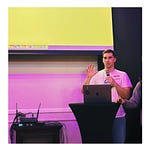Computational Creativity
Distilling AI into an algorithmic construct may also help us to better understand the mind including profound mysteries like the nature of creativity, dreams and consciousness.
Demis Hassabis — co-founder of DeepMind
Introduction
Creativity is a fundamental feature of human intelligence which distinguishes us from other branches of the tree of life. Over the centuries, it became the definition of man, yet we know so little about it. Recent advancements in artificial intelligence with models that can compose music and generate art forces us to understand these profound human definitions.
In this article, I would like to examine the term creativity and discuss its algorithmic form and the future of human creativity.
Forms of creativity
The definition of creativity proposed by Marget Boden says it is the ability to come up with ideas or artifacts that are new, surprising, and valuable. And so far, some of the current systems in artificial intelligence can satisfy this simplified description. To understand this process more deeply, the science community introduced three types of creativity.
1. Interpolation
It is an unfamiliar connection of already existing ideas. This process can be compared to averaging over the training samples and generating something new(orange dot), which still falls into the space that examples cover(green dotted line). These combinations can be created intentionally or, often unconsciously, through pattern recognition and experience. For instance, in 2004, Brian Burton took the Beatles’ “White Album” combined it with Jay-Z’s “The Black Album” to create “The Grey Album.”
This type of creativity is already performed by deep learning models, which can transfer style from one image to another.
2. Extrapolation
Extrapolation is a high level of creativity, where the new creations(blue dot) go beyond the given examples. The agent accepts the current style and becomes master in it. He explores the topic’s boundaries(white square) by pushing rules to the limits but still following them.
To illustrate, Johann Sebastian Bach released “The Art of the Fugue” in 1742. He pushed the fugue to the peak of the development by descending and ascending the melody and turning them upside down. Nevertheless, all of these ideas were executed within the topic of baroque music.
In artificial intelligence, British start-up DeepMind is the most recognizable in terms of extrapolation. Their MuZero model can achieve a superhuman level in all Atari games, chess, and go. The beauty is that this system constantly finds novel strategies and exploits the games beyond what people consider optimum.
3. Invention
It represents something completely new(yellow dot), where the agent is a pioneer, which denies the generations’ assumptions. Let’s think about Picasso, who revolutionizes art by reducing everything to cubes and introducing multiple perspectives. Or in the mathematical world, it took centuries to develop the ‘absurd’ idea of complex numbers.
These creations are mostly groundbreaking and revolutionary. They are fueling an entirely new way of thinking that appeared to be impossible for many years. In environments with well-defined rules and goals, such as chess and Go, the result would be creating an entirely new game.
So far, none of the current systems can simulate this type of creativity. We are missing the core components such as analogy, abstraction, and imagination. The existing approaches are mainly based on finding patterns in the dataset but not breaking them. The promising attempt of simulated imagination is the GQN model proposed by DeepMind, recreating the 3D scene from 2D pictures.
What is the future of human creativity?
First of all, we should stop competing against artificial intelligence. The same way we are not sprinting against cars, it’s pointless. We should focus on using these systems to enhance our capabilities.
For instance, AlphaGo brought creative and fascinating revelations to the game of go. Many players at different levels are using it to create entirely new strategies. Moreover, current best chess player Magnus Carlsen’s playing style is highly influenced by AlphaZero. That is why we should look at artificial intelligence as a tool that will liberate us from repetitive tasks and entirely focus on the creative part of tasks.
I also want to elaborate on the expressional part of creativity. In the long-term vision, creating a computer-brain interface can expand our neocortex and computational power. I think it will bring an entirely new form of self-expression, just as the frontal cortex allowed us to develop music, art, and humor. Once we get that profound way to express ourselves, we would not want to come back, the same way we would not like to have our primate’s brain.
Conclusions
So far, artificial intelligence can simulate some of the creative processes but cannot generate something genuinely innovative. It gives us time to reshape our thinking and stop competing against AI. Instead, we should empower our relationship with machines and tight up the link between us in the creative process. I started the article with Demis Hassabis’s quote, and I also would like to finish with his words.
The goal of the revolution is not to make machines to be creative, it is the goal to make human less thinking like a machine.
References
[1] Demis Hassabis: Creativity and AI the Rothschild Foundation Lecture
[2] Creativity is a remix | Kirby Ferguson
[3] Image Style Transfer Using Convolutional Neural Networks
